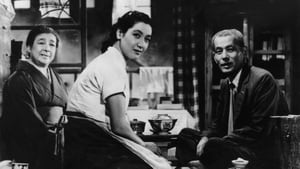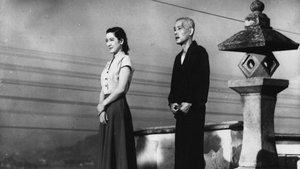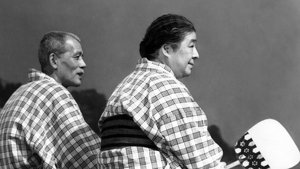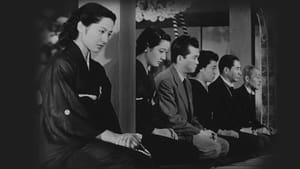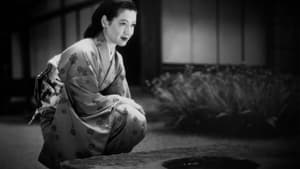Video Sources 0 Views
- Watch trailer
- Tokyo Story 1953 Colorized

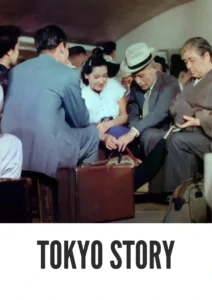
Download Tokyo Story (1953) Colorized HD | Setsuko Hara | Yasujirō Ozu | Melodramatic Family Epic
Synopsis
Table of Contents
Toggle
Step into the heart of post-war Japan with Yasujirō Ozu’s Tokyo Story, a profoundly moving family drama now brought to life in a beautifully colorized version. This 1953 film, renowned for its delicate portrayal of familial bonds and generational divides, gains a new dimension with its meticulous color restoration. Perfect for cinephiles and those seeking a deeply emotional cinematic experience, this HD download offers a fresh perspective on a timeless classic, inviting you to explore the subtle nuances of Ozu’s storytelling with enhanced visual clarity. Tokyo Story is more than just a film; it’s a reflective journey on aging, family, and the changing face of Japan.
Tokyo Story tells the poignant story of an elderly couple, Shukichi and Tomi Hirayama, who embark on a trip to Tokyo to visit their grown-up children. Expecting a warm welcome and joyful reunion, they are met with indifference and self-absorption. Their children, preoccupied with their own busy lives, find it difficult to make time for their parents, leading to feelings of loneliness and disappointment.
The only person who shows them genuine kindness is their widowed daughter-in-law, Noriko, who selflessly cares for them despite her own personal grief. As the elderly couple grapples with the realities of their children’s neglect, they are forced to confront the changing dynamics of their family and the inevitability of aging and loss. The film subtly explores themes of filial piety, the erosion of traditional values, and the universal human desire for connection and understanding. The emotional impact of Tokyo Story lies in its understated realism and its ability to evoke profound empathy for its characters.
Tokyo Story features a stellar cast of actors who deliver nuanced and heartfelt performances:
-
Chishu Ryu as Shukichi Hirayama
-
Chieko Higashiyama as Tomi Hirayama
-
Setsuko Hara as Noriko Hirayama
-
So Yamamura as Koichi Hirayama
-
Haruko Sugimura as Shige Kaneko
Tokyo Story transcends simple categorization, but it is best described as a melodramatic family epic. It blends elements of drama, social commentary, and humanism to create a deeply resonant and emotionally affecting cinematic experience. Its gentle pacing and focus on everyday life elevate it beyond typical melodrama, offering a profound meditation on the human condition.
Released in 1953, Tokyo Story reflects the socio-economic landscape of post-war Japan, a period of rapid modernization and cultural shift. Yasujirō Ozu, known for his distinctive cinematic style and his focus on Japanese family life, masterfully captures the tensions between tradition and modernity. The film offers a glimpse into the changing values and priorities of Japanese society, as well as the challenges faced by the older generation in a rapidly evolving world. Tokyo Story is considered one of Ozu’s most important works and a landmark achievement in Japanese cinema, influencing countless filmmakers and continuing to resonate with audiences worldwide.
This colorized version of Tokyo Story has been meticulously restored, employing advanced digital techniques to enrich the visual experience while preserving the film’s original emotional depth. The colorization process involved extensive research into the color palettes of 1950s Japan, ensuring an authentic and historically accurate representation. Careful attention was paid to the subtle nuances of lighting and texture, enhancing the beauty of Ozu’s compositions without sacrificing the film’s understated elegance. The goal of the colorization was to enhance the storytelling and draw viewers deeper into the world of Tokyo Story, making it accessible to new audiences while honoring its cinematic legacy.
-
: Yasujirō Ozu
-
: Yasujirō Ozu, Kogo Noda
-
: Yuharu Atsuta
-
: Yoshiyasu Hamamura
-
: Shochiku
-
: Shochiku
-
: 136 minutes
-
: MP4
-
: HD (1080p)
-
: Compatible with most devices, including smartphones, tablets, computers, and smart TVs.
Tokyo Story is widely regarded as one of the greatest films ever made, consistently appearing on critics’ lists and receiving accolades for its profound emotional impact and its masterful direction. Its exploration of universal themes such as family, aging, and loss continues to resonate with audiences around the world, solidifying its place as a timeless cinematic masterpiece. The film’s subtle beauty and its understated realism have influenced generations of filmmakers, making it a cornerstone of world cinema.
-
: What is Tokyo Story about?
-
A: Tokyo Story is a poignant drama about an elderly couple who travel to Tokyo to visit their grown-up children, only to be met with indifference and neglect.
-
-
: Is Tokyo Story (1953) considered a classic film?
-
A: Yes, Tokyo Story is widely regarded as one of the greatest films ever made, known for its emotional depth and its masterful direction.
-
-
: Is this version of Tokyo Story colorized?
-
A: Yes, this version has been professionally colorized to enhance the viewing experience while preserving the film’s original emotional impact.
-
-
: What makes Tokyo Story so special?
-
A: Tokyo Story is special for its subtle beauty, its understated realism, and its profound exploration of universal themes such as family, aging, and loss.
-
-
: What is the download format?
-
A: The download format is MP4, which is compatible with most devices.
-
-
: What resolution is the download?
-
A: The resolution is HD (1080p), providing a high-quality viewing experience.
-
Watch Tokyo Story Today!
